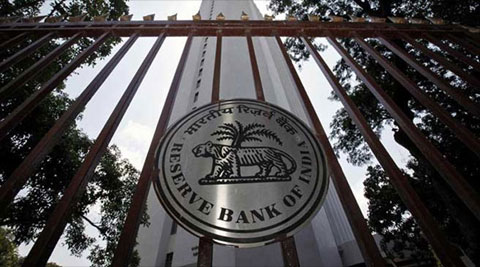Opinion A code too soon
This is not the time for comprehensive financial sector legislative reforms. Fix problems through institutional changes.

 What is now universally accepted is that central banks must have a major and dominant role in systemic risk management, even if they are not designated as macro-prudential regulators. (Illustration by: C R Sasikumar)
What is now universally accepted is that central banks must have a major and dominant role in systemic risk management, even if they are not designated as macro-prudential regulators. (Illustration by: C R Sasikumar)
Both the Union finance minister and minister of state for finance have come out with strong statements that the draft Indian Financial Code (IFC), based on the report of the Financial Sector Legislative Reforms Commission (FSLRC), is only an input into the government’s final decision. If that is so, one wonders who is responsible for the revision in the draft IFC from the original version.
The public debate over the draft, as reflected in the media over the last few days, and the view expressed almost universally that the RBI governor’s powers in monetary policy should not be clipped are encouraging. One hopes that other sections of the code will also be debated.
First, the Monetary Policy Committee (MPC). Ultimately, the RBI is responsible for price stability as per the agreement between the central bank and the government and this is also incorporated in the draft IFC. But the nuance of the objective is changed to “price stability while striking a balance with the objective of the Central government to achieve growth.” While a committee approach to decide on monetary policy is recognised, an MPC where the majority will be external members appointed by the government is not in keeping with the principle of separating the monetary authority from the sovereign. One also wonders whether there is any other country where the central bank does not have its own standalone legislation recognising its unique role as the issuer of currency and lender of last resort.
Second, banking regulation. It is good that the draft code has provided for banking regulation and supervision to continue to be with the RBI, as the original code had envisaged a fully unified financial agency with the RBI having a temporary role in banking regulation. The new draft IFC reiterates that all other non-bank credit institutions will be under the financial agency. Such a move would lead to a fragmentation in credit-regulated policies and give rise to regulatory arbitrage, which itself can seriously undermine financial stability. Globally, the Basel approach is that banking regulation should also apply to the group/ holding company, and not the bank alone. The banking regulator needs authority to exercise oversight over the banking group/ conglomerate, in which there may be entities such as insurance companies, AMCs, pension funds. There should be a provision for this in the IFC.
Third, systemic risk regulation. What is now universally accepted is that central banks must have a major and dominant role in systemic risk management, even if they are not designated as macro-prudential regulators. In the US, once the Financial Stability Oversight Council has identified a systemically important financial institution, the ongoing regulation and supervision are the Federal Reserve’s responsibility. In the UK, the Bank of England is specifically designated as the macro-prudential regulator. Globally, systemic risk and its measures are “works in progress” and it is much better that the Financial Stability Development Council continues in its present institutional form. The draft code restricts the universe of systemic risk tools to just three, but there can be many more and some are evolving. Moreover, the response time for introducing these measures needs to be very short, as there can be anticipatory action. Allowing 90 days for a response from the regulator to proposals from the systemic risk committee for changes in the loan-to-value (LTV) or income-debt instalment ratio seems ridiculous.
Fourth, capital controls. This is the area where the new draft code has travelled a long distance from the original draft contained in the FSLRC report. Fortunately, the rather odd suggestion of entrusting control of inflows to the government and outflows to the RBI has been dropped. The dissenting members of the FSLRC had given cogent reasons why the RBI and the government need to be involved in deciding on capital controls, as is the practice now. This has served us well and enabled us to deal with many a crisis, including the Asian crisis and the global crisis.
Fifth, public debt management. The draft IFC envisages a Public Debt Agency (PDA) in which there will be four executive members chosen by the selection committee for a period of five years, three members, one each, nominated by the government, the RBI and a state government (by turn). Since this is a matter too important to be left to just financial market professionals selected by an external committee, it is best that the PDA, if separated, functions with officials and staff from the RBI and the finance ministry familiar with debt management. As the PDA gains experience as a separate entity, the process of selecting executive members from the wider market can commence. There seems to be no particular merit in transferring the registry and depository functions currently undertaken by the RBI to the agency or to depositories. In fact, the present arrangement, apart from being safe, low-cost and efficient, also provides the financial system the convenience and comfort of finality of settlement in central bank money, considered best practice.
Sixth, the regulation of money, forex and government securities markets, and related derivatives. The exchange rate and interest rates are not fully market-determined. A high combined debt and fiscal deficit imply the SLR cannot come down much in the near future. The impact of volatile capital flows on forex and government securities markets is well known and needs a multitude of tools to manage them. Hence, it is necessary that the RBI have a role in the regulation of these markets. In case of exchange traded products, there could be concurrent regulation by the RBI and the financial agency.
Seventh, the payments system. The RBI has been given jurisdiction only over systemically important payments systems (Sips). A large number of innovations are happening in the retail payments systems that have system-wide implications, and may not qualify for the Sips. Again, this is a new and growing area the implications of which, for monetary policy and financial sector regulation, are not fully clear. Providing a means of payment is akin to currency and its oversight is best left with the RBI.
To sum up, the global crisis has taught us that the thinking on an optimal policy and regulatory framework for the financial sector is still emerging. What is, however, clear is that governments and central banks have had to pay a heavy price for rescuing the financial sector because of the excesses in both bank- and market-dominated financial systems — ultimately, at the cost of public welfare. Hence, this is not an opportune time for comprehensive legislative reforms. Instead the focus should be on fixing problems through institutional changes and making legal changes only where required.
The writer is a former deputy governor of the Reserve Bank of India.





